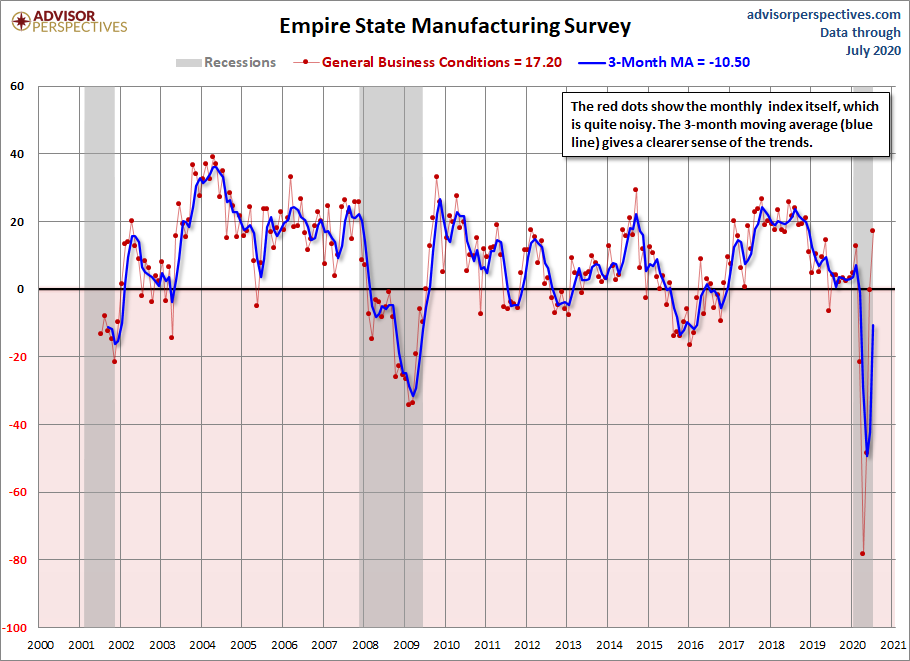Manufacturing Index - Empire State Survey July 2020
Supplemental Survey Report ongoing recalls despite pandemic adjustment costs will be released
Business
activity increased in New York State for the first time in several
months, according to firms responding to the July 2020 Empire
State Manufacturing Survey. The headline general business
conditions index rose to 17.2, its first positive reading since
February. New orders and shipments also increased, and unfilled
orders were steady. Delivery times were somewhat longer, and
inventories declined. Employment levels and the average workweek were
little changed. Input price increases were not much different than
last month, while selling prices edged lower. Firms remained
optimistic about the six-month outlook, though less so than in June.
Here are best accounting practices for Manufacturing Business set by The International Accounting Standards Board and the Financial Accounting Standards Board.
Conditions Improve
Manufacturing
firms in New York State reported that business activity increased in
July, marking the first such pickup since the pandemic began. The
general business conditions index rose above zero, climbing seventeen
points to 17.2, its third consecutive monthly increase. Forty-one
percent of respondents reported that conditions had improved over the
month, while 24 percent reported that conditions had worsened. The
new orders index rose fifteen points to 13.9, indicating that orders
increased, and the shipments index climbed fifteen points to 18.5,
pointing to a solid increase in shipments. Unfilled orders were
unchanged. Delivery times were slightly longer, and inventories
declined.
Employment Holds Steady
The
index for number of employees edged up to 0.4, signaling that
employment levels were steady. Notably, 22 percent of firms said that
employment levels increased in July, the same proportion that
reported a decrease. The average workweek index increased nine points
to -2.6, pointing to a small decline in hours worked. The prices paid
index was little changed at 14.9, indicating that input prices
increased at about the same pace as last month. The prices received
index moved down to -4.5, indicating that selling prices declined.
Optimism Dips
After
rising sharply last month to a multi-year high, the index for future
business conditions fell eighteen points to 38.4, suggesting that
firms remained optimistic about future conditions, though less so
than in June. The indexes for future new orders and future shipments
fell somewhat, but remained near 40. The index for future employment
rose to 21.1, suggesting firms expect to increase employment in the
months ahead. The capital expenditures index rose to 9.1, a sign that
firms, on net, planned to increase capital spending.



Comments
Post a Comment